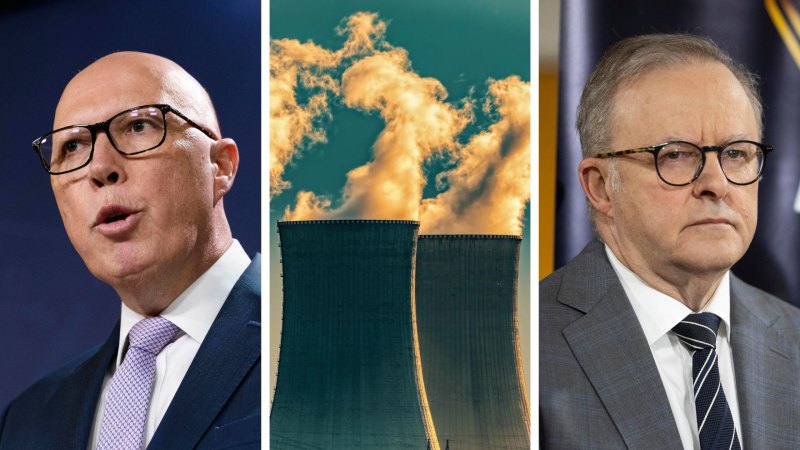The share of power generated from sun, wind and water is expanding each year in Australia – now making up roughly 40 per cent of the mix – as billions of dollars pour into household and grid-scale renewable energy and batteries, and the coal-fired generators bring forward closure dates.
But the transition is running behind the pace experts deem necessary to keep the 82 per cent renewable energy target within reach, as projects face rising costs, lengthy approval timelines, community pushback and a lack of new power lines to connect far-flung wind and solar regions to cities.
Loading
Energy Minister Chris Bowen voiced confidence on Monday that the target could be hit due to the impact of a new federally funded underwriting program, the Capacity Investment Scheme, which aims to turbocharge the private sector’s rollout of renewable energy and storage assets, including batteries and pumped hydro.
“I expected it to work well, and it’s working better than I thought it would,” he told the AFR summit, adding that the government planned to expand the scheme’s next auction to 10 gigawatts of new capacity.
Bowen said the opposition’s plan to add nuclear to the grid would “chill” investment in new renewables and leave no choice but to delay closures of ageing and failure-prone coal-fired generators, at least half of which are scheduled to shut on the eastern seaboard in the next decade
Citing the Coalition’s lack of a 2030 climate target, Bowen added: “They are not serious people, frankly, when it comes to emissions reduction”.
Opposition energy spokesman Ted O’Bren said Labor was on track to fall short on all its 2030 targets for emissions, renewables, electric vehicle uptake and power price cuts.
“Labor can’t be trusted to deliver,” he said.
“The Coalition’s position has always been that we will set our targets based on the status of the economy and emissions trajectory, along with our own climate and energy policies.”
Nuclear has the benefit of being an emissions-free source of continuous power, which does not fluctuate with wind and sun. But many industry leaders and energy officials have cautioned nuclear is a “comparatively expensive” power source that would take too long to deploy, rendering it an impractical solution to the grid’s most pressing needs.
Loading
Research from the CSIRO and the Australian Energy Market Operator this year concluded that the country’s first nuclear plant would cost up to $16 billion and would not likely be operational until at least 2040.
Westpac Institutional Bank’s head of energy, David Scrivener, said on Monday that interim climate targets served as important “anchor points”, providing certainty around the direction and speed of the energy transition.
Stephanie Bashir, of energy consultancy Nexa Advisory, said Australia’s future “must not be held hostage to the political cat fights of election campaigns”.
“We do not have the luxury of time to put our progress towards an inevitable transition on hold for the next six months.”



